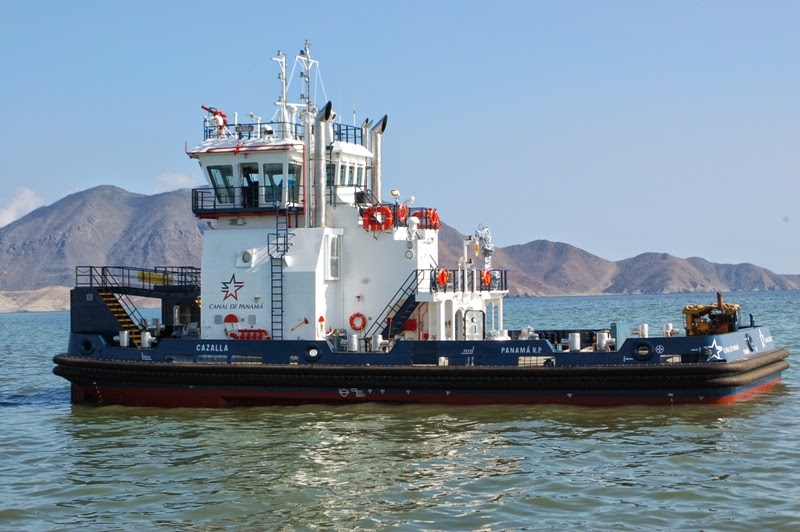Tugboats are one of the most easily recognised of all vessel types, and have found a popular place in the public's eyes, even appearing in a number of Children's books and television programmes. However, there are a number of common varieties it is useful to recognise if you are working in the industry; each has some distinctive features, as set out briefly below.
-
The Common Harbour Tug
The workhorse of all local and national harbours, these versatile little tugs are able to help with all kinds of activities in port, as well as berthing, towing vessels out and potentially salvaging vessels in distress. Identify them by their small size and all-round basic fendering (often tyres) which shows the variety of jobs they may have to assist with.
Image credit: simplonpc.co.uk
-
AHTS (Anchor Handling Towage Supply)
These large, advanced tugs are favourites of the offshore industry, these tugs can provide all the services required to oil rigs and platforms, including towing them into place, setting their anchors, and carrying goods and cargo as well as crew to and from the vessel. Identify them by their very large size, gear (cranes onboard for lifting), and open-backed stern (for taking anchors onboard).
Image credit: aluminiumnowturkey.com
-
Pusher tug / River Tug
These vessels principally operate in sheltered inland waters, and tend to push (rather than tow) other vessels. Because they typically push barges or regular vessels by their flat stern, they are usually unusual looking with a flat front.
Image Credit: GPIA.com
-
ATB Tugs
Articulated Tug and Barge (ATB) combinations are custom built sets of tugs and barges which go together. Normally the tug slots into the back of the barge for a more secure fit. Because they are often pushing large unmanned barges from behind, they need to have their bridge set very high, to see over the front of the barge; hence the unusual 'high neck' appearance. These vessels are more common in the USA.
Image credit: towmasters.wordpress.com
-
ASD Tugs
Azimuth Stern Drive (ASD) tugs do not have a rudder and propeller system like most vessels. Instead they are fitted with an advanced propeller which itself can turn direction, normally with one or two such propellers fitted at the stern of the vessel. This gives the tug much improved and more efficient manoeuvrability in the water, which allows them to better help other vessels. It also reduces running costs. However, these vessels remain expensive to build so look out for top-spec, modern-design, with more of an even all around freeboard tugboats.
Image credit: products.damen.com
-
SDM Tugs
Ship Docking Module (SDM) tugs are, as the name implies, specifically designed to help other vessels dock in sheltered harbours or marinas. They have a very low and wide freeboard, so they can get up close to any section of the hull of larger ships without damaging them. They are also extremely nimble and have two Azimuth (360 degree) thrusters at either end, so they can spin 360, or speed up very quickly then move the opposite direction. They have a patented shape like a floating saucer, and because they are patented by one marine company (Seabulk), they are not as frequently spotted as other harbour craft.
Image: ebdg.com







